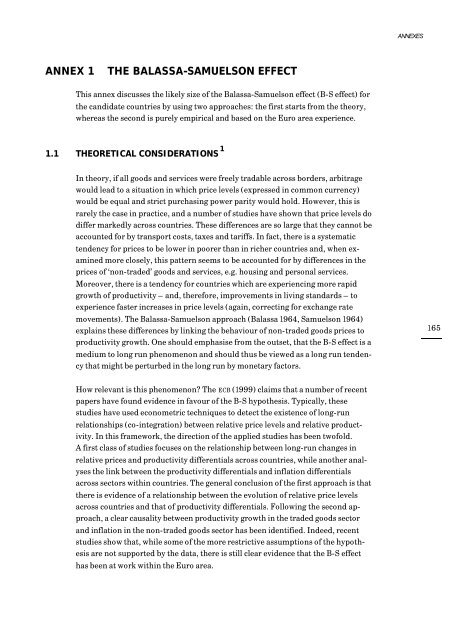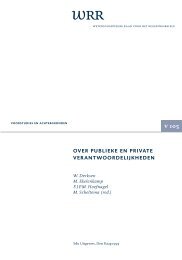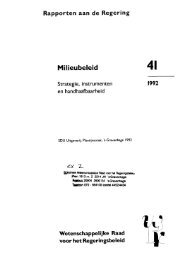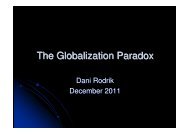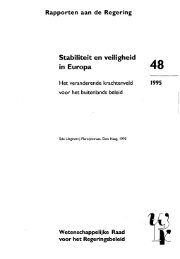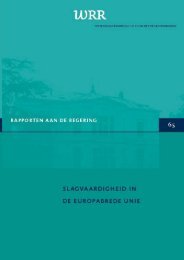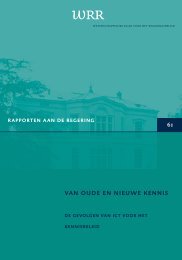w 109 long-run economic aspects of the european union's eastern ...
w 109 long-run economic aspects of the european union's eastern ...
w 109 long-run economic aspects of the european union's eastern ...
Create successful ePaper yourself
Turn your PDF publications into a flip-book with our unique Google optimized e-Paper software.
ANNEXESANNEX 1THE BALASSA-SAMUELSON EFFECTThis annex discusses <strong>the</strong> likely size <strong>of</strong> <strong>the</strong> Balassa-Samuelson effect (B-S effect) for<strong>the</strong> candidate countries by using two approaches: <strong>the</strong> first starts from <strong>the</strong> <strong>the</strong>ory,whereas <strong>the</strong> second is purely empirical and based on <strong>the</strong> Euro area experience.1.1 THEORETICAL CONSIDERATIONS 1In <strong>the</strong>ory, if all goods and services were freely tradable across borders, arbitragewould lead to a situation in which price levels (expressed in common currency)would be equal and strict purchasing power parity would hold. However, this israrely <strong>the</strong> case in practice, and a number <strong>of</strong> studies have shown that price levels dodiffer markedly across countries. These differences are so large that <strong>the</strong>y cannot beaccounted for by transport costs, taxes and tariffs. In fact, <strong>the</strong>re is a systematictendency for prices to be lower in poorer than in richer countries and, when examinedmore closely, this pattern seems to be accounted for by differences in <strong>the</strong>prices <strong>of</strong> ‘non-traded’ goods and services, e.g. housing and personal services.Moreover, <strong>the</strong>re is a tendency for countries which are experiencing more rapidgrowth <strong>of</strong> productivity – and, <strong>the</strong>refore, improvements in living standards – toexperience faster increases in price levels (again, correcting for exchange ratemovements). The Balassa-Samuelson approach (Balassa 1964, Samuelson 1964)explains <strong>the</strong>se differences by linking <strong>the</strong> behaviour <strong>of</strong> non-traded goods prices toproductivity growth. One should emphasise from <strong>the</strong> outset, that <strong>the</strong> B-S effect is amedium to <strong>long</strong> <strong>run</strong> phenomenon and should thus be viewed as a <strong>long</strong> <strong>run</strong> tendencythat might be perturbed in <strong>the</strong> <strong>long</strong> <strong>run</strong> by monetary factors.165How relevant is this phenomenon? The ECB (1999) claims that a number <strong>of</strong> recentpapers have found evidence in favour <strong>of</strong> <strong>the</strong> B-S hypo<strong>the</strong>sis. Typically, <strong>the</strong>sestudies have used econometric techniques to detect <strong>the</strong> existence <strong>of</strong> <strong>long</strong>-<strong>run</strong>relationships (co-integration) between relative price levels and relative productivity.In this framework, <strong>the</strong> direction <strong>of</strong> <strong>the</strong> applied studies has been tw<strong>of</strong>old.A first class <strong>of</strong> studies focuses on <strong>the</strong> relationship between <strong>long</strong>-<strong>run</strong> changes inrelative prices and productivity differentials across countries, while ano<strong>the</strong>r analyses<strong>the</strong> link between <strong>the</strong> productivity differentials and inflation differentialsacross sectors within countries. The general conclusion <strong>of</strong> <strong>the</strong> first approach is that<strong>the</strong>re is evidence <strong>of</strong> a relationship between <strong>the</strong> evolution <strong>of</strong> relative price levelsacross countries and that <strong>of</strong> productivity differentials. Following <strong>the</strong> second approach,a clear causality between productivity growth in <strong>the</strong> traded goods sectorand inflation in <strong>the</strong> non-traded goods sector has been identified. Indeed, recentstudies show that, while some <strong>of</strong> <strong>the</strong> more restrictive assumptions <strong>of</strong> <strong>the</strong> hypo<strong>the</strong>sisare not supported by <strong>the</strong> data, <strong>the</strong>re is still clear evidence that <strong>the</strong> B-S effecthas been at work within <strong>the</strong> Euro area.


